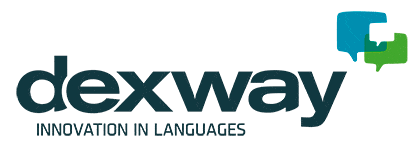Technology, through digitization, is opening up a great world of possibilities for society, and teaching is one of the sectors that can make the most of the opportunities. The modernization of classrooms and the advances in methodology, through digital transformation, extend the available resources and complement traditional practices perfectly.

What’s more, until recently schools, high schools, universities, academies and teaching centers could freely decide the degree of digitization they wanted to incorporate into their daily work. However, this choice became almost a necessity, due to the mobility and social distancing restrictions that COVID-19 brought.
Therefore, prioritizing an exclusively online methodology (e-learning) or a mixed model (blended learning) is recommendable, in contrast to face-to-face classes. So, the process of digital transformation that for many was at the halfway point, or even in its infancy, has had to accelerate rapidly. Today, those who previously rejected the change due to fear or doubts about its usefulness are realizing that learning through digital resources not only works, but is also really comfortable and useful.
Digital transformation opens a new world for education
Among the many advantages of the digitization of education, we find the following:
-
Access resources quickly and easily, as they are all together on online multimedia platforms.
-
It provides a personalized option for students and adapts to their needs. Students decide at what time of the day they want to continue their course without the need to always be physically in the classroom. This means that they can take advantage of the times that suit them best, for example their commutes, to connect and progress through the content.
-
It is much easier to motivate and attract students. Traditional classes are usually based on long theoretical presentations by teachers, with little or no participation from students. However, these methods are not suitable for digital teaching, because attention is more easily lost. Faced with this problem, the solution has been to enrich learning – promoting participation, interactivity, etc.
-
Greater streamlining and fluidity of communication – using digital tools for the activities they were specifically designed for. Feedback is necessary during classes and students can participate to ask questions or to raise something new.
-
As we have already pointed out, in a situation like the one experienced in 2020, digitization has also contributed to keeping the spread of the Coronavirus at bay. Therefore, it is a great way to take care of other classmates and the teacher, as well as yourself.
What advantages does digitization bring to language schools and language centers?
It is important to highlight that the digital transformation of education does not mean the ‘death’ of traditional methods and face-to-face training. Simply put, technology has come to help education evolve and to encourage the use of virtual classes to compliment face-to-face sessions. Additionally, students have access to more resources and solutions, and are able to learn in a more personalized, simple and efficient way.
This is something that comes across very clearly in the case of academies and language centers because they were the first to understand the importance of implementing this digital transformation process for the benefit of their curricula, their teaching staff and, above all, their own students.
These are some of the advantages of the use of technology for language learning:
-
Students have multimedia files that they can play as many times as they want, which is essential for them to improve aspects such as pronunciation or grammar.
-
In the same vein, it is possible to repeat each lesson or exercise over and over again to polish learning and correct the most common mistakes. In the assimilation of languages, repetition is something necessary to consolidate and reinforce new knowledge and there is already software that takes this into account and that is responsible for finding the aspects that students find more difficult so as to review them as much as possible.
-
Likewise, having image and audio files is very useful for learning vocabulary by association, something that has proven to be a very effective method when dealing with new languages.
-
It is possible to use games to assimilate knowledge more easily through fun and playful activities, while the user hardy notices. This factor is especially important in the case of young learners because games are the best way for them to retain the new concepts they learn.
- User participation is encouraged, which is essential for students to improve their language skills and practice the new language. Digitization offers a lot of possibilities to interact and facilitates communication, something necessary for the student to acquire fluency in the language he or she is learning.
-
Videoconferences are used to the maximum, since they allow the student to focus on the face and gestures of the interlocutor. This helps them to improve their conversational techniques and to cope better when having to express themselves orally.
-
It is much easier to carry out evaluations, since even students can assess their own progress, thanks to the interactive tools they have access to.
-
Comfort does not only refer to the possibility of studying from wherever you want with a flexible timetable, it also involves the study material. Online books and fully digitized resources streamline the experience and save students the hassle of having to carry them on the way to the study center. This is especially valuable in the case of languages, since e-books and digital files also allow students to make notes or complete exercises quickly and affordably.
-
In language learning, consistency and regular habits are essential. Unlike in some other subjects, it is much more profitable to spend half an hour studying every day than, for example, three or four hours on a single day every week. So, thanks to digitization, it is feasible to ration lessons and distribute work, so that it becomes a daily habit and not an exclusively weekly activity.
Dexway e-learning solution allows you to start your digital transformation now
At Dexway we are experts in innovation in language learning, so we can help you develop digital transformation processes for your academy or language center.
This is how we can offer a complete, effective learning methodology for language training centers and language centers, as it incorporates the best of face-to-face training with all the advantages that we have just seen that online training provides. It contributes to strengthening the students’ training, improving the profitability of the business and lightening the teachers’ workload through the use of modern tools and interactive resources.
Our offer includes Classroom Companion language courses, created to support work in the classroom (blended learning); as well as courses available as SCORM licenses for your educational platforms or as a turnkey solution, including LMS and cloud hosting. This means that we are prepared to adapt to your needs and to help you promote and consolidate the digitization of your academy or language center.
So don’t hesitate to contact us here if you are interested. Why not request access to our demo? We’re sure that we have a lot to offer you and your business or institution.
You may also be interested in:

